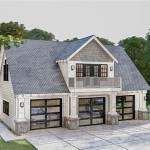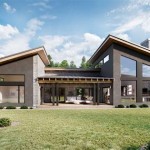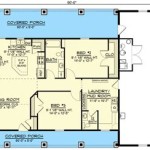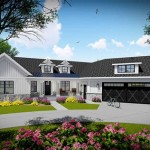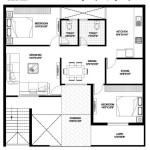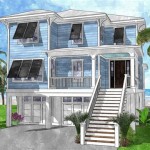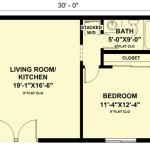Inexpensive To Build House Plans: Maximizing Affordability Without Sacrificing Quality
The dream of homeownership often clashes with the reality of escalating construction costs. However, building an affordable house is achievable with careful planning and the selection of inexpensive to build house plans. These plans prioritize efficient design, cost-effective materials, and simplified construction processes, allowing prospective homeowners to realize their aspirations without incurring crippling debt. This article explores the key considerations for selecting such plans and maximizing affordability in the building process.
The concept of "inexpensive to build" extends beyond merely the initial purchase price of the house plan. It encompasses the total cost of construction, including labor, materials, permits, and potential unforeseen expenses. Therefore, choosing a plan is only the first step. Effective budget management, strategic material sourcing, and the selection of a competent and cost-conscious contractor are critical components of a successful and affordable build. Ignoring these aspects can quickly erode any perceived savings from a nominally inexpensive plan.
Understanding the Factors Influencing Construction Costs
Several factors dictate the overall cost of building a house. Understanding these factors is crucial for making informed decisions regarding house plan selection and construction methods. These factors can be broadly categorized into design elements, material choices, and labor costs.
Firstly, design complexity significantly impacts the cost. Simple, rectangular house plans with minimal ornamentation are inherently less expensive to build than intricate designs with irregular shapes, multiple rooflines, and extensive detailing. The more complex the design, the more skilled labor is required, and the more materials are wasted during the cutting and fitting process. Therefore, opting for a straightforward design can substantially reduce both material and labor costs.
Secondly, material choices play a vital role. While high-end finishes and exotic materials can enhance the aesthetic appeal of a house, they also significantly increase the building expenses. Selecting cost-effective alternatives, such as engineered wood flooring instead of solid hardwood, concrete countertops instead of granite, or vinyl siding instead of brick, can result in substantial savings without necessarily compromising the overall quality or durability of the structure. The key is to prioritize functionality and longevity while remaining within the prescribed budget.
Thirdly, labor costs constitute a significant portion of the total construction budget. Hiring experienced and qualified contractors is essential for ensuring the structural integrity and longevity of the house. However, labor costs can vary considerably depending on the location, the complexity of the project, and the contractor's overhead. Obtaining multiple bids from reputable contractors and carefully scrutinizing their proposals is crucial for securing a competitive price. Consideration should also be given to the possibility of performing some of the less skilled tasks, such as painting or landscaping, independently to further reduce labor expenses.
Key Features of Inexpensive To Build House Plans
Inexpensive to build house plans typically share several common characteristics that contribute to their affordability. These features focus on maximizing space utilization, minimizing material waste, and simplifying construction processes. Understanding these features allows prospective homeowners to identify plans that align with their needs and budget.
One of the primary characteristics is a compact and efficient layout. These plans often prioritize open-concept living spaces and strategically located bedrooms and bathrooms to minimize wasted square footage. Avoiding unnecessary hallways, oversized rooms, or elaborate architectural features helps to reduce the overall building footprint and, consequently, the amount of materials required. The focus is on providing comfortable and functional living spaces within a manageable and affordable framework.
Another common feature is the use of standard building materials and readily available components. Inexpensive to build house plans generally avoid incorporating exotic or specialized materials that are difficult to source or require specialized installation techniques. Opting for commonly available lumber, standard-sized windows and doors, and readily accessible plumbing and electrical fixtures simplifies the construction process and reduces the risk of delays or cost overruns. This approach also makes it easier to obtain competitive bids from contractors, as they are familiar with the materials and construction techniques involved.
Simple rooflines are also a defining characteristic. Complex roof designs, such as those with multiple gables, dormers, or valleys, are significantly more expensive to construct than simple gable or hip roofs. The complexity increases the amount of materials required, adds to the labor time, and increases the risk of leaks. Choosing a house plan with a straightforward roof design can significantly reduce both material and labor costs while still providing adequate protection from the elements.
Strategies for Minimizing Construction Costs
Beyond selecting an inexpensive to build house plan, several strategies can be implemented to further minimize construction costs. These strategies involve careful planning, proactive material sourcing, and efficient project management.
Firstly, detailed planning is paramount. Before construction begins, developing a comprehensive budget that includes all anticipated expenses, such as permits, materials, labor, and landscaping, is essential. Regularly reviewing the budget and tracking expenses throughout the construction process helps to identify potential cost overruns early on and allows for corrective action to be taken. It is also crucial to establish a contingency fund to cover unexpected expenses or unforeseen problems that may arise during construction. A well-defined plan minimizes the risk of costly mistakes and helps to keep the project on track and within budget.
Secondly, strategic material sourcing can significantly reduce construction costs. Obtaining multiple quotes from different suppliers for lumber, roofing materials, windows, and other components is crucial for securing the best possible prices. Consider purchasing materials in bulk to take advantage of volume discounts. Explore the possibility of salvaging or repurposing materials from demolition sites or online marketplaces. However, ensure that any recycled or salvaged materials meet the required building codes and are in good condition. Careful material sourcing can lead to substantial savings without compromising the quality or safety of the construction.
Thirdly, efficient project management is essential for minimizing delays and cost overruns. Establishing a clear timeline for the construction process and regularly monitoring progress helps to ensure that the project stays on schedule. Maintaining open communication with the contractor and addressing any issues promptly can prevent minor problems from escalating into major and costly setbacks. Consider using project management software to track tasks, deadlines, and expenses. Effective project management minimizes wasted time and resources and helps to keep the construction process running smoothly and efficiently.
Furthermore, exploring alternative building methods can also contribute to cost savings. For example, prefabricated homes, while requiring careful consideration of transportation and site preparation, can often be built more quickly and efficiently than traditional stick-built homes. Similarly, alternative foundation systems, such as slab-on-grade foundations, can be less expensive than traditional basement foundations, particularly in areas with stable soil conditions. Investigating these alternative methods can reveal opportunities for significant cost reductions without compromising the structural integrity or energy efficiency of the house.
Finally, prioritize energy efficiency in the design and construction process. Investing in energy-efficient windows, insulation, and appliances can significantly reduce utility bills over the long term. Consider incorporating passive solar design principles to maximize natural light and minimize the need for artificial lighting and heating. While some of these measures may involve a slightly higher upfront cost, the long-term savings in energy consumption can easily offset the initial investment. Furthermore, many jurisdictions offer tax incentives or rebates for energy-efficient construction, which can further reduce the overall cost of building an energy-efficient home.

Est House Plans To Build Simple With Style Blog Eplans Com

Affordable House Plans Our Est To Build Blog Homeplans Com
What Is The Est Type Of House To Build Blog Floorplans Com

Affordable House Plans Our Est To Build Blog Homeplans Com

Building On The Affordable House Plans Of 2024 Houseplans Blog Com

Building On The Affordable House Plans Of 2024 Houseplans Blog Com

Est House Plans To Build Simple With Style Blog Eplans Com

Affordable House Plans Our Est To Build Blog Homeplans Com

Building On The Affordable House Plans Of 2024 Houseplans Blog Com

Affordable Home Ch3 Floor Plans And Data

